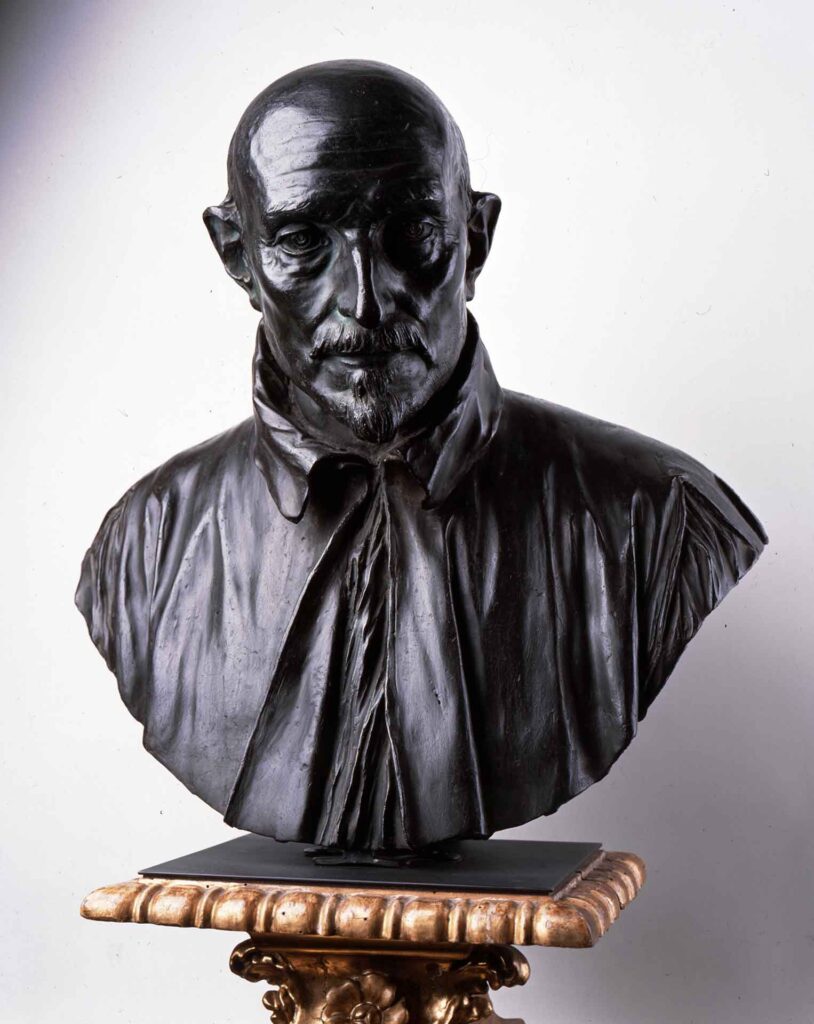Bust of Bishop Ulpiano Volpi
Alessandro Algardi , 1640 - 1650
Description

Ulpiano Volpi was a prominent ecclesiastical figure of the early 17th century: of Como origin, archbishop of Chieti and bishop of Novara, he lived mainly in Rome in the papal curia, where he held important positions. The portrait was probably made from a death mask, that is, a plaster cast taken directly from the face of the deceased. The Bolognese sculptor Alessandro Algardi was among the leading figures of the Roman Baroque. The bust, datable to the 1740s, marks a moment of the artist’s singular approach to the work of Gian Lorenzo Bernini, so much so that for a long period this bronze was attributed to Bernini himself.
Data Sheet
Author
Alessandro Algardi, 1598-1654
Date
1640 - 1650
Material and technique
bronze
Measures
57.5 cm x 60.5 cm x 35 cm
Acquisition
1891
Inventory number
0410
location
Stucco Room
The Stucco room is the first historical room on the piano nobile, where the Museum’s porcelain and majolica collections have always been housed. Gian Giacomo Poldi Pezzoli personally acquired almost all of the pieces on display, about six hundred and fifty, displayed in a showcase built in 1880 to divide the Stucco room from the Golden room. The section of Meissen porcelain, undoubtedly the richest and most significant, covers the manufacture’s production from the 1720s to the second half of the nineteenth century, and includes table services, statuettes, and various objects. In Gian Giacomo’s time the Hall of the Stuccoes, called the Yellow Room, had stucco decorations in the Rococo style, which were destroyed in ’43 and partially reconstructed according to the original models.
